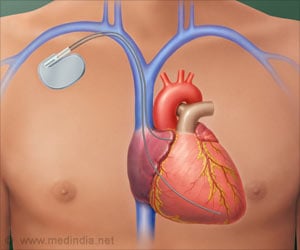A new leadless pacemaker has been developed for heart patients, which has no wires, less invasive and causes fewer complications than the standard pacemakers.

‘Leadless pacemakers decrease the risk of infections, clots and eliminate any problems with heart valve function.’





In a standard system, the pacemaker is implanted under the skin just below the collarbone. A lead (wire) extends to the patient's heart.The new leadless pacemaker does not have any wires. It also is miniaturized so the electronics, battery and delivery system are contained in one unit the size of a large vitamin pill.
"Patients can't even tell they have it," said cardiologist Peter Santucci, MD, medical director of Loyola's implant device program.
The leadless pacemaker is deployed with a catheter that is inserted in a patient's groin and guided through blood vessels up to the heart. The device is secured to heart muscle inside the lower right pumping chamber.
Unlike a standard pacemaker, a leadless pacemaker does not create a bulge under the skin.
Advertisement
"The leadless pacemaker is another example of how Loyola is able to offer the most modern advances to our patients," Dr. Santucci said.
Advertisement
Loyola's Center for Heart and Vascular Medicine is one of the leading centers in the Midwest for the diagnosis and treatment of complex heart rhythm disorders.
Electrophysiologists offer treatment options that may be unavailable at other centers. U.S. News and World Report's Best Hospitals 2017-18 ranks Loyola 18th in the nation for cardiology and heart surgery.
Source-Newswise












